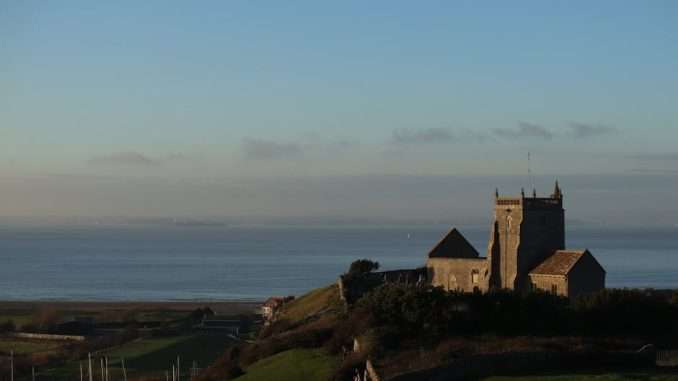
Nestled within the picturesque Quantock Hills of Somerset, the village of Nether Stowey is on the precipice of a transformative period. Plans for extensive new housing developments have ignited a spirited debate among residents and local officials, who find themselves navigating the complex interplay between growth and conservation. Central to this discourse is the Cricketer Farm site, located just north of the A39 Cannington Road, which is set to evolve into a vibrant residential hub, eliciting both anticipation and apprehension within the community.
Read more about sustainable development.
The initial phase of the Cricketer Farm development has already introduced 109 homes to the area, including 16 units classified as affordable housing, facilitated by a grant from Homes England. This inaugural wave of construction has generated mixed reactions, as locals come to terms with the changes in their once tranquil village. To address the escalating demand for housing, an additional 58 homes are planned for the northern part of the existing site, with a notable 40% designated as affordable. This emphasis on affordability aims to meet the pressing need for accessible housing options in the region, ensuring that both long-term residents and newcomers can find a place to call home.
However, the journey towards development is rarely straightforward. While planning officers have recommended granting permission for this new phase, the Sedgemoor District Council’s planning committee has opted to defer their decision. They have unanimously agreed to conduct a site visit to better understand the potential impact on the local environment and community dynamics. This cautious approach underscores the council’s recognition of the delicate balance they must uphold.
Adding another dimension to the ongoing debate over Nether Stowey’s future, F. & G. Jeanes & Sons Ltd. has submitted plans to build 83 homes and a retail unit nearby. Local planning targets stipulate that the village should provide at least 75 new homes by 2032. Nevertheless, the cumulative effect of these concurrent projects raises questions about the village’s infrastructure and services’ capacity to accommodate such growth. To support the anticipated influx of residents, several infrastructure enhancements have been proposed, including a significant £490,000 allocation through the Community Infrastructure Levy (CIL) for new schools, addressing the expected increase in student populations. Additionally, over £23,000 has been earmarked for the expansion of the Quantock Medical Centre, ensuring that healthcare services can keep pace with the growing community. These measures aim to alleviate the strain on local resources, highlighting the scale of the transformation underway.
Environmental considerations are paramount in the planning discussions. The development plan includes the creation of two new attenuation ponds on-site to manage stormwater and mitigate flood risks—a crucial measure given the village’s vulnerability to heavy rains. Furthermore, a proposal to reserve green space for a potential orchard seeks to enhance the area’s aesthetic appeal while contributing to local biodiversity. These initiatives reflect a concerted effort to harmonise development with ecological stewardship.
Despite these proactive measures, local councillors and residents have voiced several concerns. Councillor Alan Bradford has expressed reservations about the inclusion of a three-storey block of flats within the development, arguing that it could disrupt the scenic views that define Nether Stowey. Councillor Brian Bolt echoed these sentiments, noting that such a structure seems incongruous with the village’s predominantly low-rise landscape. These concerns underscore the community’s desire to preserve the village’s character amidst the pressures of modernisation. Housing affordability remains a focal point of discussion. While the commitment to affordable housing is commendable, there are lingering worries about the overall impact of increased housing demand on local property prices. Ensuring that long-term residents can continue to afford to live in the area is a priority for the community, reflecting broader concerns about social equity and community cohesion.
The developer responsible for this project, Strongvox, is well-acquainted with the Somerset region, actively developing homes at various sites across the county. However, the sensitivity of the Cricketer Farm site—both in terms of its environmental significance and its place within the community—necessitates a careful and considered approach. Councillor Bob Filmer has recommended a site visit to fully assess the implications of the proposed development, a suggestion met with unanimous agreement from the planning committee. This decision underscores the council’s commitment to making an informed and balanced judgement that considers all aspects of the project.
As the planning committee prepares for its site visit, the residents of Nether Stowey remain vigilant. The outcome of this development will undoubtedly shape the future of their village, influencing housing availability and affordability, as well as the preservation of its natural beauty and character. The Quantock Hills, designated as an Area of Outstanding Natural Beauty (AONB), is cherished for its rolling landscapes, rich biodiversity, and tranquil environment. The Cricketer Farm development, while promising to address housing shortages, must navigate the delicate balance between growth and conservation.
The proposed expansion at Cricketer Farm represents both a significant opportunity and a formidable challenge for Nether Stowey. With thoughtful planning and community engagement, it is possible to achieve a development that honours the village’s heritage while accommodating its future needs. As the council’s site visit approaches, all eyes will be on the decision-makers, hoping for a resolution that benefits both current and future generations. The planned developments offer the promise of modern amenities and much-needed housing, yet they also pose questions about sustainability, community cohesion, and the preservation of natural beauty.
In the coming months, the decisions made in Nether Stowey will be closely watched, not just by its residents, but by rural communities across the UK. The outcome will set a precedent for how such communities can balance development with the preservation of their unique identities. As the village stands at this critical crossroads, the choices made today will shape its landscape and legacy for years to come.


Be the first to comment